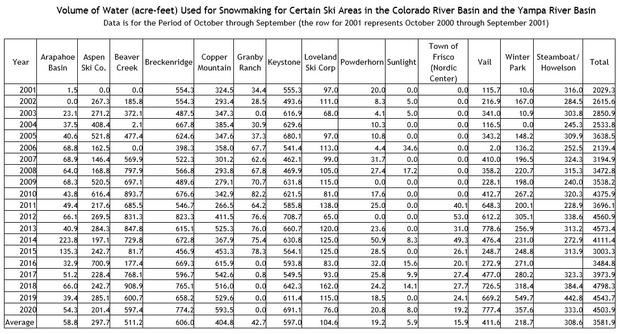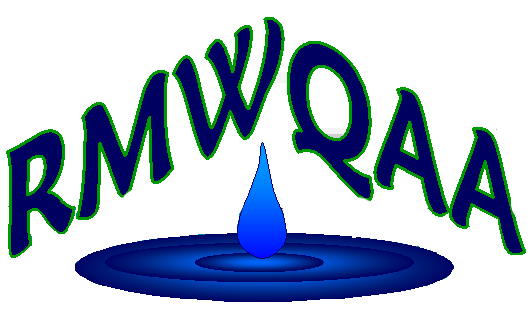As the ski season starts to ramp up, I became more curious of the importance of water for ski resorts in their process of snowmaking. Anyone who has been to any of these mountain resorts has probably seen their snowmaking machines pumping out snow to ensure fresh powder is available for all the skiers and snowboarders. I wanted to first investigate exactly what the process of snowmaking entailed but then also investigate where these resorts were getting their water and how various environmental impacts such as drought might impact these resorts.
After doing some research I found Steamboat has a good blog on how their snow is made. Steamboat has been making snow since 1981 and they have been able to improve their technique over the years. They can make over 600-acre feet of snow each season using over 300 guns and 40 miles of buried pipe. The process of making snow has two important factors that impact the resort’s ability to make snow that are outside of the crew’s direct control. One is the wind and the other is wet bulb temperature. Wet bulb temperature is how air temperature and relative humidity interact with each other. The lower the relative humidity, the colder the wet bulb temperature will be. Ideally for snow making, the wet bulb temperatures are less than 26°F. So, crews are looking for low wind, temperature, and humidity. Steamboat crews use the Yampa River as the main source of water for their resort. They pump the water from the river via pipes at about 40°F, then shoot it into the air through the guns. The water will stay in the air until it freezes and turns into snow. Snowcat operators spread the piles around to make the conditions ideal for skiers.
These resorts need a lot of water each ski season to provide artificial snow. According to the Colorado Department of Natural Resources, (CDNR) Colorado uses about 2.2 billion gallons of water every year in the snowmaking process. The CDNR regulates how much water each business is allowed to use. Ski resorts have a set amount of water they can use every year from senior water rights that they obtained years ago.

Credit: Colorado Department of Natural Resources
As we experience different environmental impacts such as droughts, the available water becomes scarcer. Even though a lot of these resorts own water rights it doesn’t mean water will always be available. Because of this, many resorts are working on ways they can improve the snowmaking process and help with the conservation of water. Over time, resorts have learned that dry weather and low wind help produce better quality snow that will last longer. Many resorts have figured out optimal times to make snow as well. An important factor in snowmaking is ensuring that everything you made does not melt right away. So, working around weather forecasts and keeping the snow as cold as possible is an important factor to keeping our ski resorts snowy.
Many of these resorts are used as “cold storage” for water. About 80% of the water used in snowmaking is recycled back into the watershed at the end of the ski season. Because of this, many resorts are now focusing on energy-efficient technology that allows them to manage their resources and use less energy. Skiing and snowboarding are great winter activities that many residents and visitors to the State of Colorado enjoy taking part in. Water is critical to keep these activities going for many years to come. It was nice to learn more about this process and the different efforts resorts are taking to keep operations going despite challenges with the water supply.
https://www.cbsnews.com/colorado/news/colorado-skiing-snowmaking-gallons-water-use/
https://blog.steamboat.com/the-most-modern-and-energy-efficient-way-to-create-the-early-season-fluff/
Michael Hendricks is a Water Quality Senior Technician for Denver Water
 Welcome to the
RMWQAA Website!
Welcome to the
RMWQAA Website!  Welcome to the
RMWQAA Website!
Welcome to the
RMWQAA Website!